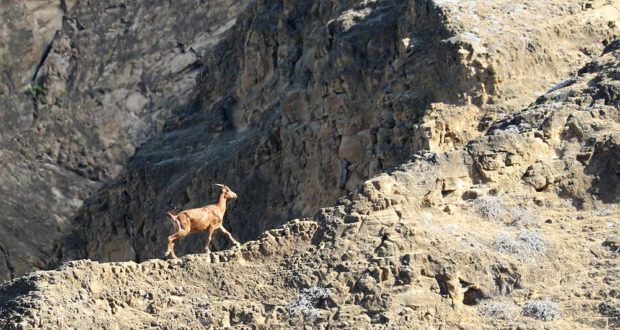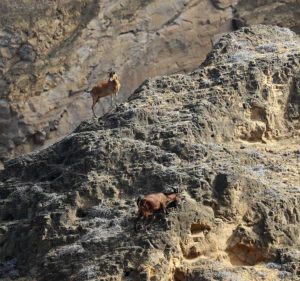In the woods there are many wild pigs and goats …
– Charles Darwin, 23 September 1835
Walking along the barren trail above the beach at Punta Pitt, I saw three mountain goats deftly climbing a steep ridge. How do they keep their balance on the narrow, fragmented rocks? When I pointed them out to our guide, he stared into the distance for a moment and then said in a hush voice, “Oh … that’s not good.”
Goats are a problem in the Galapagos. Introduced by early settlers, they have inhabited the islands for more than two centuries. The problem is, they need little water and will eat just about anything. In herds, they quickly strip away the vegetation, even eating the bark off trees. They wreak havoc on the habitat, causing erosion and leaving little food behind for the islands’ tortoises and other native populations. By the 1990s, the Galapagos had an estimated 250,000 feral goats. Northern Isabella Island alone had about 100,000, and its tortoise population was plunging.
Beginning in 1997, a systematic hunting program called Project Isabela sought to eradicate all of the goats, feral pigs and donkeys on Northern Isabella, Santiago and Pinta islands. Hunting from the ground and the air, the project eliminated about 90 percent of the goats relatively quickly.
After that, they relied on what they called “Judas goats”, sterilized animals released in the wild with radio collars. Once they hooked up with the other goats on the islands, they led the hunters to the remaining populations.
With the completion of the initial eradication program in 2006, Galapagos tortoise populations on those islands have rebounded from 3,000 to 19,000 individuals
The eradication program on San Cristobal, which is ongoing, has eliminated an estimated 3,500 goats, according to the Galapagos Conservancy. About 3,000 remain, including the stragglers I saw heading for the hills.

